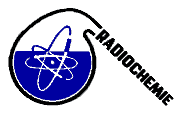Speaker
Prof.
Amares Chatt
(Dalhousie University)
Description
Simultaneous speciation neutron activation analysis (SSNAA) technique is being developed in our laboratory over the last 15 years. This technique can now be used for the simultaneous determination of not only various species of a single element but also species of other elements present in the same sample. Almost all speciation techniques consist of two steps. The first step involves the separation of species from the sample followed by the second step of element-specific detection. Neutron activation analysis (NAA) methods in combination with high-performance liquid chromatography (HPLC) were developed first for the determination of low levels of five arsenic species, namely As(III), As(V), monomethylarsonic acid (MMA), dimethylarsinic acid (DMA), and arsenobetaine (AsB) in water samples. Organically bound arsenic (OBAs) and total arsenic levels were measured. The detection limits of the HPLC-NAA method were found to be 0.005 ng mL-1 for OBAs, 0.02 ng mL-1 for AsB, DMA, MMA, As(III), and As(V) and 0.12 ng mL-1 for total arsenic using the Dalhousie University SLOWPOKE-2 reactor facility. These methods were then extended to include the determination of arsenic, antimony and selenium species, namely As(III), As(V), AsB, OBAs, MMA, DMA, Sb(III), Sb(V), and Se(IV), in natural water samples by solvent extraction and solid-phase extraction. The accuracy of the methods was evaluated by analyzing a Riverine Water CRM. Details of all three methods will be presented along with the concentrations of various species measured.
Primary author
Prof.
Amares Chatt
(Dalhousie University)
Co-author
Dr
Youqing Shi
(Dalhousie University)

